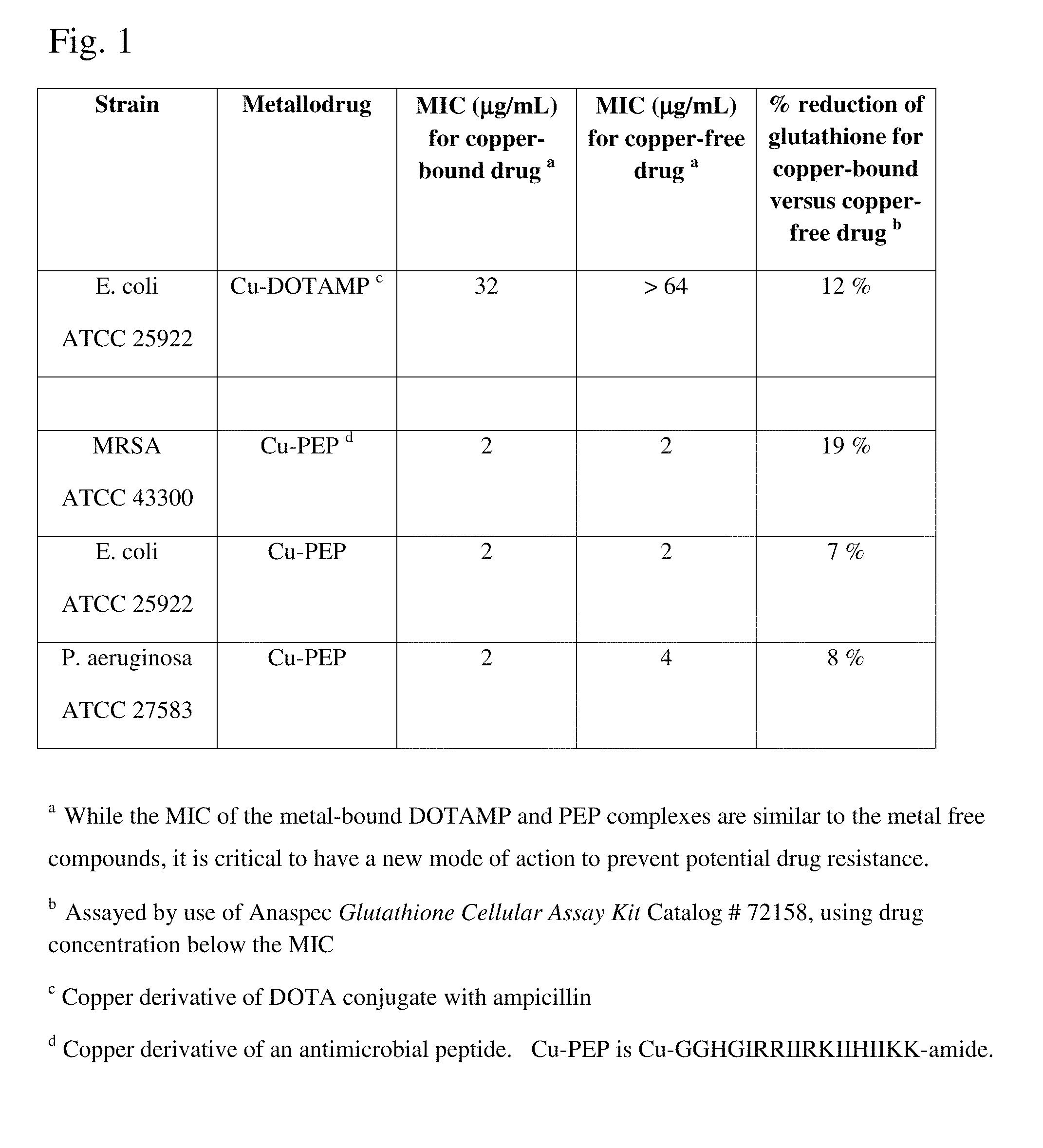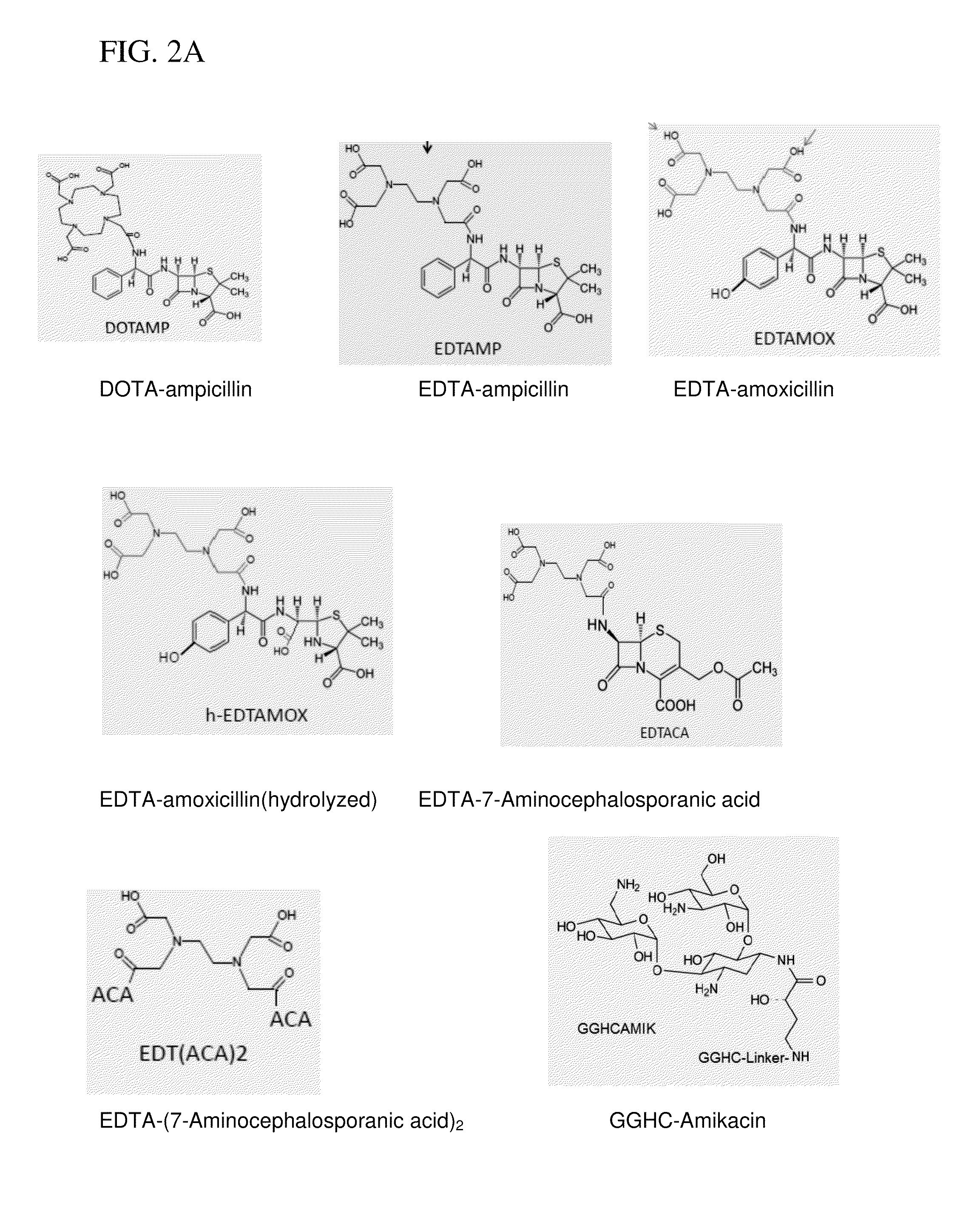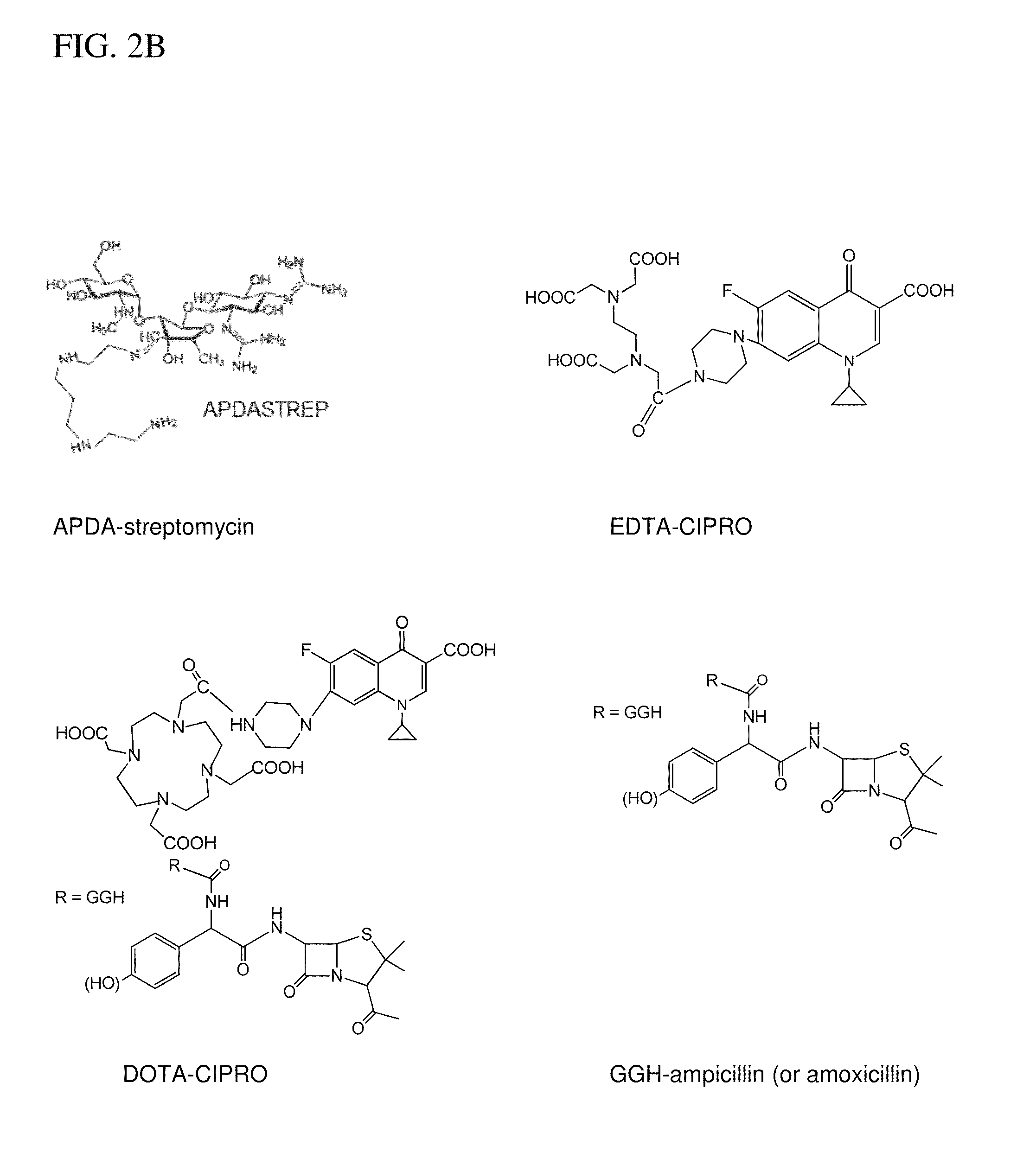Metallodrugs having improved pharmacological properties and methods of manufacture and use thereof
a technology of pharmacological properties and improved methods, applied in the direction of drug compositions, group 3/13 element organic compounds, peptides, etc., can solve the problems of cell death and significant damage to host tissues, and achieve the effect of being more poten
- Summary
- Abstract
- Description
- Claims
- Application Information
AI Technical Summary
Benefits of technology
Problems solved by technology
Method used
Image
Examples
example 1
[0119]A conjugate of DOTA with ampicillin was formed by standard 1-Ethyl-3-[3-dimethylaminopropyl]carbodiimide hydrochloride (EDC) coupling methods and copper coordinated in solution by addition of aqueous copper ion following HPLC purification. Ampicillin sodium salt was from Fisher BioReagents (MW 371.4). DOTA-NHS-ester was from Macrocylic (DOTA-NHS-ester. HPF6.3CF3COOH, MW 990). All other reagents and solvents were of the highest available purity and used as purchased.
[0120]In an eppendorf tube, 8 mg of Ampicillin (Na salt, 0.022 mmole, 2× excess) was dissolved in 200 μL dry DMSO. The solution was added into a small glass crimp cap vial with rubber septum containing 8 mg DOTA-NHS-ester (0.011 mmole). The reaction mixture was purged with argon for 5 min, and it was mixed overnight at room temperature using a small stirring bar.
[0121]DOTA-Ampicillin was purified from the reaction mixture using two different chromatographic techniques. In the first step, anionic-HPLC purification wa...
example 2
Synthesis of EDTA-Amoxicillin (EDTAMOX)
[0123]Amoxicillin was obtained from MP Biomedicals (MW 365.4). EDTA (free acid) was from Aldrich (MW 292.24) and EDC from TCI America. All other reagents and solvents were of the highest available purity and used as purchased.
[0124]In a small glass crimp cap vial with rubber septum, 12 mg EDTA (0.041 mmole) was mixed with 300 μL dry DMSO. The mixture was heated on a hot-plate to complete dissolution of EDTA. After cooling down the solution to room temperature, 8 mg of EDC (0.042 mmole) was added and mixed at room temperature for 30 min. Then, 5 mg of NHS (0.043 mmole) was added to the mixture and mixed for another 30 min. 18.3 mg amoxicillin (0.05 mmole) was added to activated EDTA, and the reaction was mixed overnight at room temperature (pH 7-8).
[0125]EDTA-Amoxicillin was purified from the reaction mixture using two different chromatographic techniques. In the first step, anionic-HPLC purification was carried out on a PolyWAX LP column (4.6×2...
example 3
Synthesis of EDTA-7-Aminocephalosporanic acid (EDTACA)
[0127]7-Aminocephalosporanic acid was obtained from Fisher BioReagents (MW 272.3). EDTA (free acid) was from Aldrich (MW 292.24) and EDC from TCI America. All other reagents and solvents were of the highest available purity and used as purchased.
[0128]In a small glass crimp cap vial with rubber septum, 12 mg EDTA (0.041 mmole) was mixed with 300 μL Dry DMSO. The mixture was heated on a hot-plate to complete dissolution of EDTA. After cooling down the solution to room temperature, 8 mg of EDC (0.042 mmole) was added and mixed at room temperature for 30 min. Then, 5 mg of NHS (0.043 mmole) was added to the mixture and mixed for another 30 min. 13.6 mg amoxicillin (0.05 mmole) was added to activated EDTA, and the reaction was mixed overnight at room temperature (pH 7-8).
[0129]EDTACA was purified from the reaction mixture using two different chromatographic techniques. In the first step, anionic-HPLC purification was carried out on a...
PUM
| Property | Measurement | Unit |
|---|---|---|
| oxidative stress | aaaaa | aaaaa |
| pH | aaaaa | aaaaa |
| pH | aaaaa | aaaaa |
Abstract
Description
Claims
Application Information
 Login to View More
Login to View More - R&D
- Intellectual Property
- Life Sciences
- Materials
- Tech Scout
- Unparalleled Data Quality
- Higher Quality Content
- 60% Fewer Hallucinations
Browse by: Latest US Patents, China's latest patents, Technical Efficacy Thesaurus, Application Domain, Technology Topic, Popular Technical Reports.
© 2025 PatSnap. All rights reserved.Legal|Privacy policy|Modern Slavery Act Transparency Statement|Sitemap|About US| Contact US: help@patsnap.com



